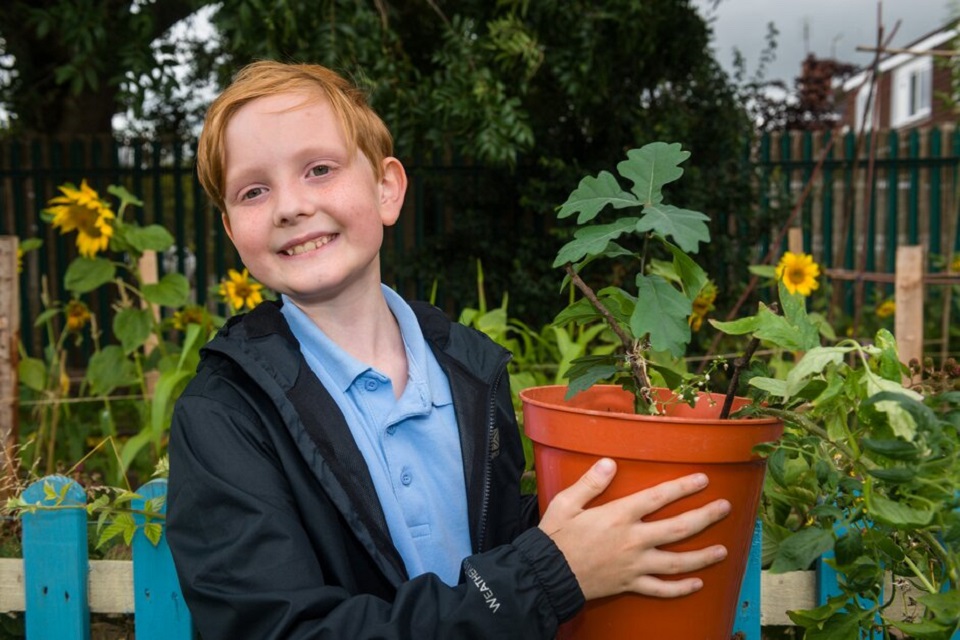Welcome to Shedquarters – the nerve centre of Sir Alexander Fleming's magical school garden
Horticulturalist, author and TV presenter Frances Tophill recently visited Sir Alexander Fleming Primary School in Telford, Shropshire to present them with their School Gardening Team of the Year (Primary) award.
19 July 2023
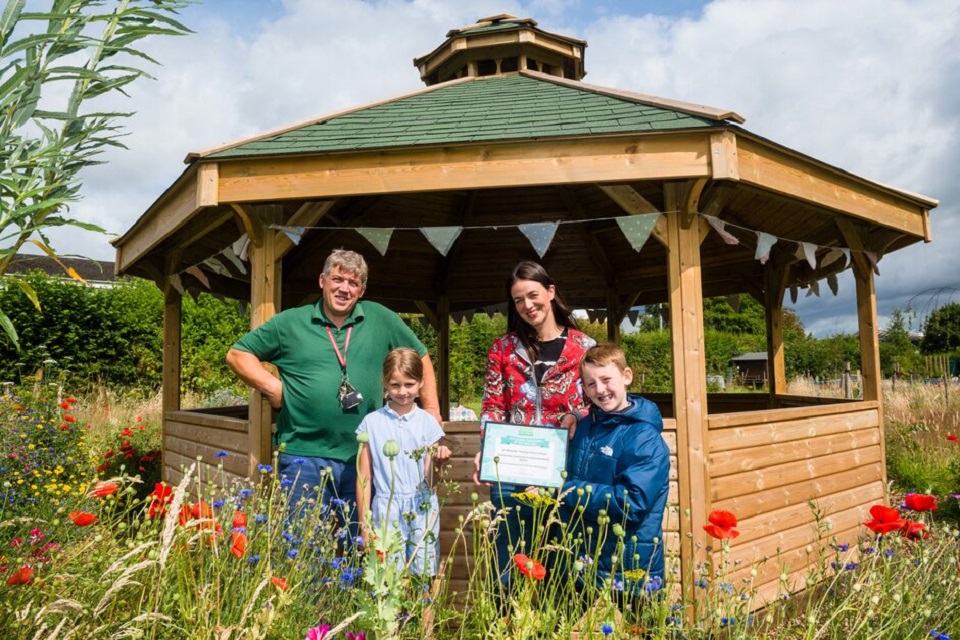
From recycled polytunnels and no-dig meadows to clay building and self-wicking beds, if you’re looking for ideas to magpie for your own outdoor space, look no further as we take you on a tour of their school garden.
Congratulations to our award winners
The visit began with an assembly where teacher John Ratcliffe, who nominated the school for the award, played the nomination video highlighting the special outdoor spaces the children created together. Frances congratulated pupils and staff while presenting them with their certificate and £500 worth of National Gardening Gift Vouchers. The school also won a patio glasshouse, kindly donated by Hartley Botanic. which will be installed later this year.
Nature is a place to soothe children who are struggling
Wellies and raincoats were pulled on so that the children could take Frances on a tour of the garden, proudly showing her all they have done. First stop, ‘The Allotment’. Today a thriving plot with raised beds bursting with colourful flowers, soft fruits, fragrant herbs and vegetables used in the school kitchen; a polytunnel made from recycled materials by John and Year 6 pupils; and ‘Shedquarters’, complete with a wormery, this is where the school’s gardening journey first began.
In 2019, staff cleared a small part of the overgrown garden here and used it as a place to take children who were struggling in the classroom. It wasn’t long before they began to see a positive impact.
“Children were more relaxed, they had more space to move, switch off, be in the moment and were connecting better with each other.”
- John Ratcliffe, Outdoor Learning lead
From there, things took off. During the Covid lockdowns in 2020, staff and children finished clearing the area, erected a new fence and got to it – planning, digging, building and planting. It was hard work, but the physical activity of gardening has been great for staff and students.
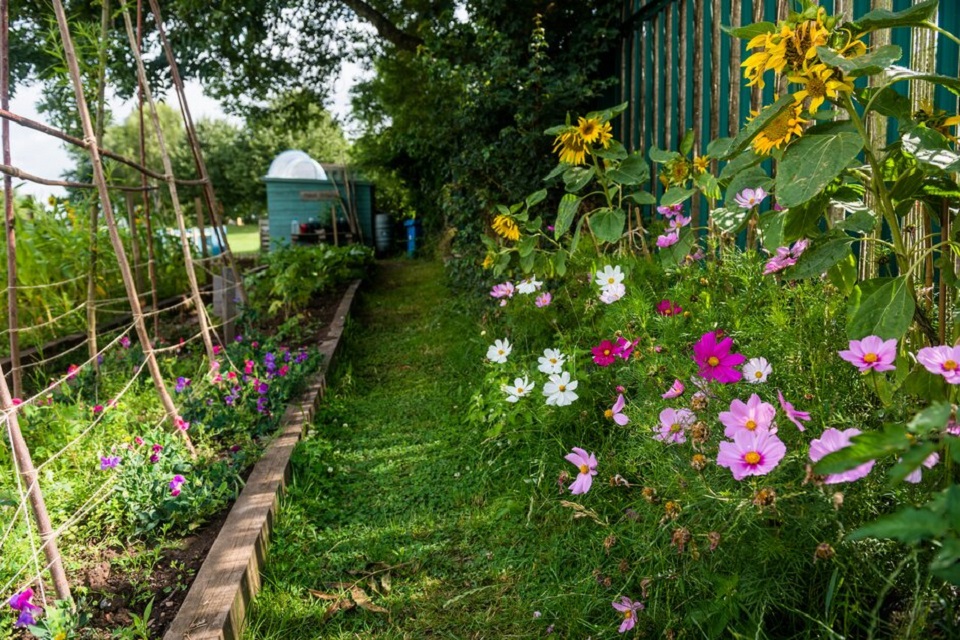
Shortly after bringing the allotment to life, work began on creating an even larger area for encouraging biodiversity. The result is ‘The Hazels’. Already home to magnificent oak and silver birch trees, this space now also includes a ‘Future Forest’ – an assortment of native tree saplings such as walnut, willow, apple, pear and beech, planted by the children for future generations to enjoy. There are also several pollinator patches here and an abundance of acorns which the children are encouraged to have a go growing at home. Not to mention the popular den-building areas and clay pits where children unearth clay with their hands and make seed bombs, pots and sculptures.
Addressing deprivation through access to the outdoors
As things took off in the garden and, buoyed by its positive impact, headteacher Katy Tomlinson saw the potential in expanding the outdoor learning offering to all 400 pupils at this community primary school which serves an area ranked in the top 5 per cent of deprivation nationally.
“Many of our pupils don’t have gardens at home. We wanted to do more at school to give all our children access to nature and normalise going outdoors as part of the curriculum.”
- Katy Tomlinson, headteacher
As of September last year, an additional ten classes, from years 2 to 6, were given the opportunity to spend regular time outdoors. This complements the existing outdoor provision already in place for the youngest children in the school. This new initiative now provides at least two hours timetabled in the garden every two weeks. Each session begins with time spent actively noticing the environment, observing small changes and being aware of the passing of the seasons.
Learning together and building self-confidence
“The children are becoming immersed in our natural world. From being averse to going outside and not keen on dirt or bugs, pupils are now more engaged, curious and excited. They are developing a sense of respect and wonder for the biodiversity around our site. Together we are learning new skills and knowledge and building self-confidence. Seeing pride in achievements increase as we create new areas of planting, maintain the site and enhance our environment is priceless.”
- John Ratcliffe
John’s background is teaching rather than horticulture. “We stick it in and see if it grows. There are failures and successes, and we learn from both alongside each other. There is no judgement or unrealistic expectations here.”
John leads the outdoor sessions with support from teaching assistants. As well as practical gardening skills, learning how to use tools safely and increasing knowledge about gardening and the natural environment, children are also developing outdoor skills such as bush craft, whittling, knot tying, woodwork and campfire building.
The creation of this new role, dedicated to teaching outdoor learning and gardening, is key to the whole-school approach.
Positive impact on behaviour
Headteacher Katy Tomlinson said that this model is working well for their children. As well as gaining knowledge, fostering new skills and experiences and broadening horizons, gardening and outdoor learning has already had a huge impact on the social and emotional health of the children and a positive bearing on behaviour.
“The children have purpose and freedom. They love going out in all weathers. I am proud of everything John and the children have achieved. Our outside area has been transformed from nothing to the lovely spaces we have today.”
- Katy Tomlinson, headteacher
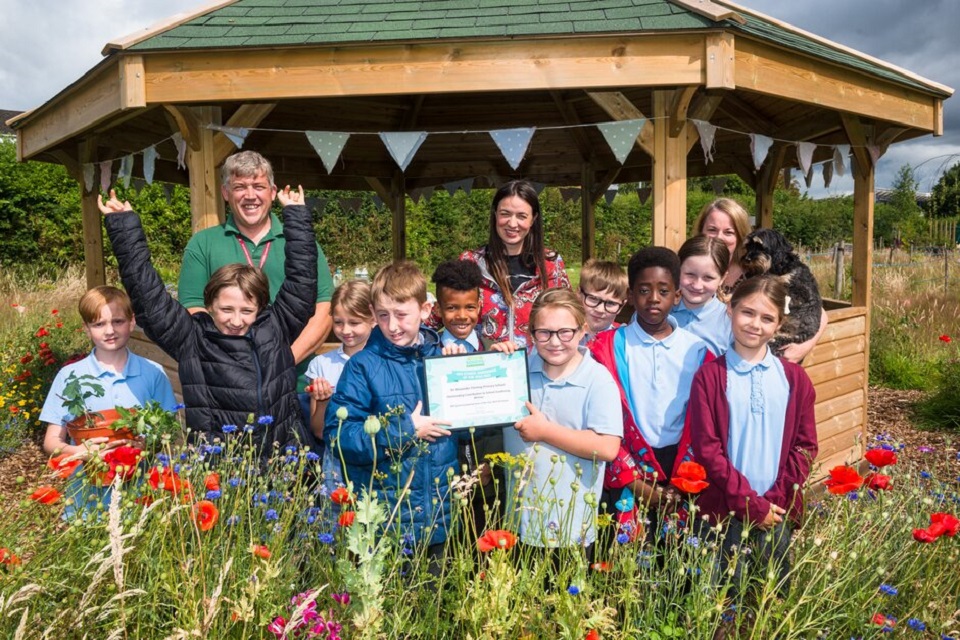
Other highlights on the tour included a mid-morning break to enjoy some homemade refreshments. The elderflower cordial – made from plants growing in the school hedge – and lemon cake baked by Mrs Ratcliffe were a hit all round. We enjoyed them in ‘The Haven’, a shelter built with support from the local council, that seats a class of children and has a fire pit in the centre – ideal for learning outdoors whatever the weather. The shelter is enveloped by vibrant wildflowers such as common poppies, love-in-a-mist and satin flowers which the children sowed earlier in the year. Nearby ‘Conversation Corner’ is a space for quiet contemplation.
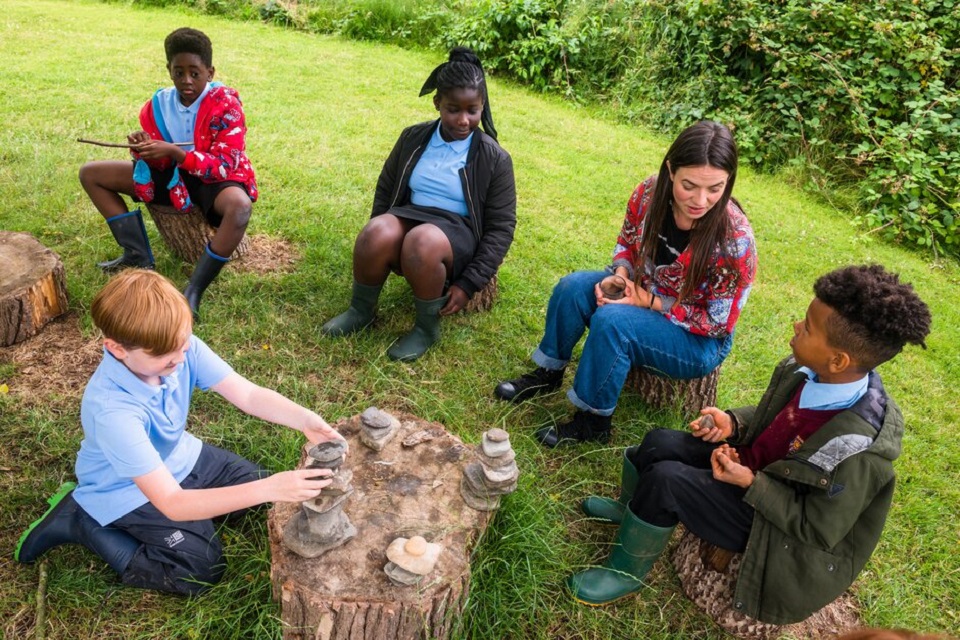
“People come here to have conversations because the other parts can be loud – some people like to have their own space.”
- Christodea, Year 5 pupil
A magical place
With budgets tight and the environment top of mind, recycling and repurposing are key. In the garden’s ‘Wild Corner’, the children have created bug hotels and log piles using donated pallets and wood. The four ponds are made from old tyres and the bog garden is housed in a former tractor tyre.
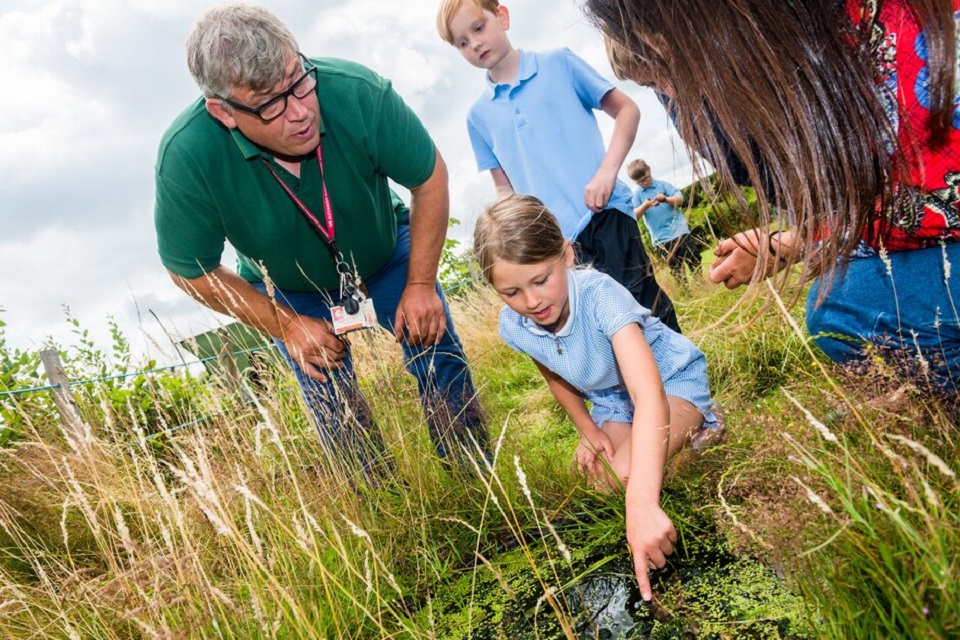
“Nature is like entertainment. It helps you from watching TV.”
- Charlie, Year 4 pupil
Horticulturalist Frances Tophill commented that the spaces give the children perspective, hope, resilience and grounding, helping them cope with life and whatever it brings. She said the way John notices what excites the children, and nurtures those sparks of interest, cannot be underestimated.
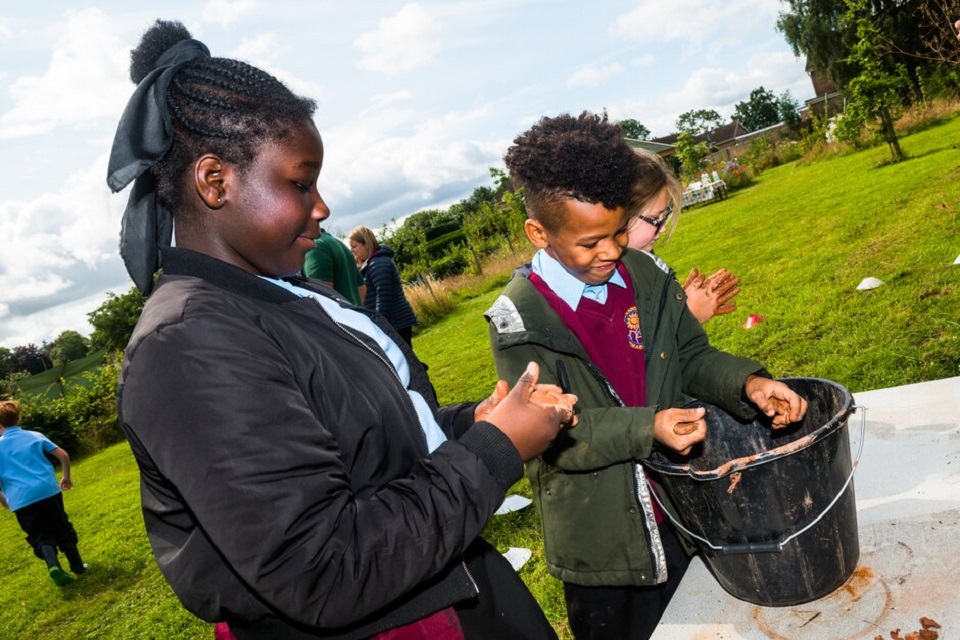
“This is a magical place. A space where the children have freedom to explore. It has engaged all the children in their own different ways whether that’s making clay seed bombs, searching for acorns, whittling willow or building dens.”
- Frances Tophill
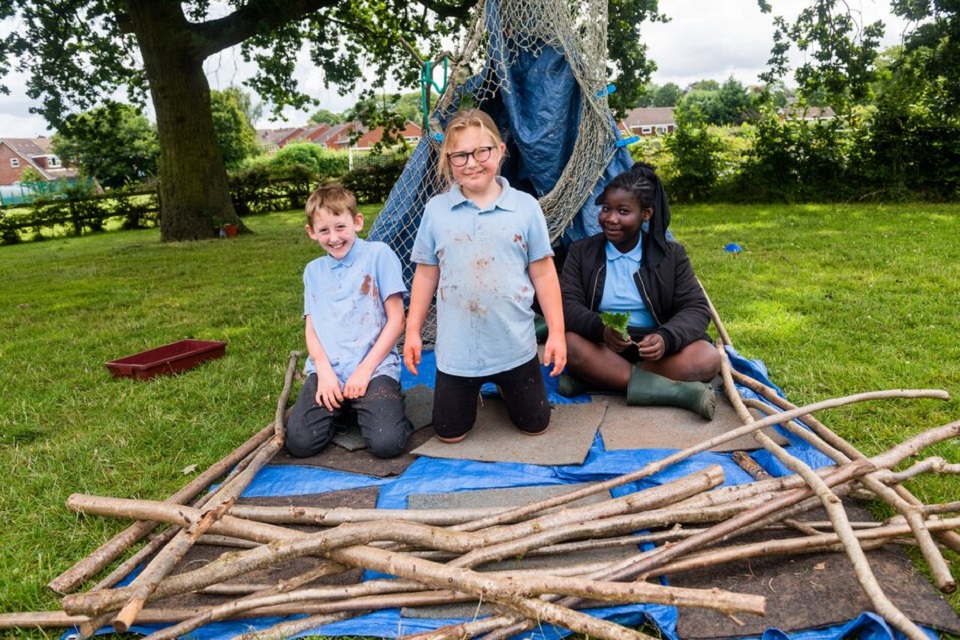
Like for a lot of schools, watering is a struggle. It isn’t possible to get water from the school as there is no mains water pressure outside and carrying heavy cans hundreds of metres just isn’t practical.
The school have water butts for storage and are soon taking receipt of a 1,500-litre former orange juice bulk container to help conserve more water. They hope that the black plastic will mean fewer problems with algae, like they’ve previously had with white plastic containers. They have also just created two self-wicking beds. Water is stored in a reservoir underneath the soil, and it ‘wicks up’ to the roots above as the plants transpire moisture through their leaves. The hope is that the reservoir can keep the soil moist for days. Watch this space!
“With our winning gardening vouchers, we plan to buy more science and gardening equipment. The aim is then to build in more outdoor cross-curriculum activities starting with science and design technology. Exciting times ahead.”
- John Ratcliffe
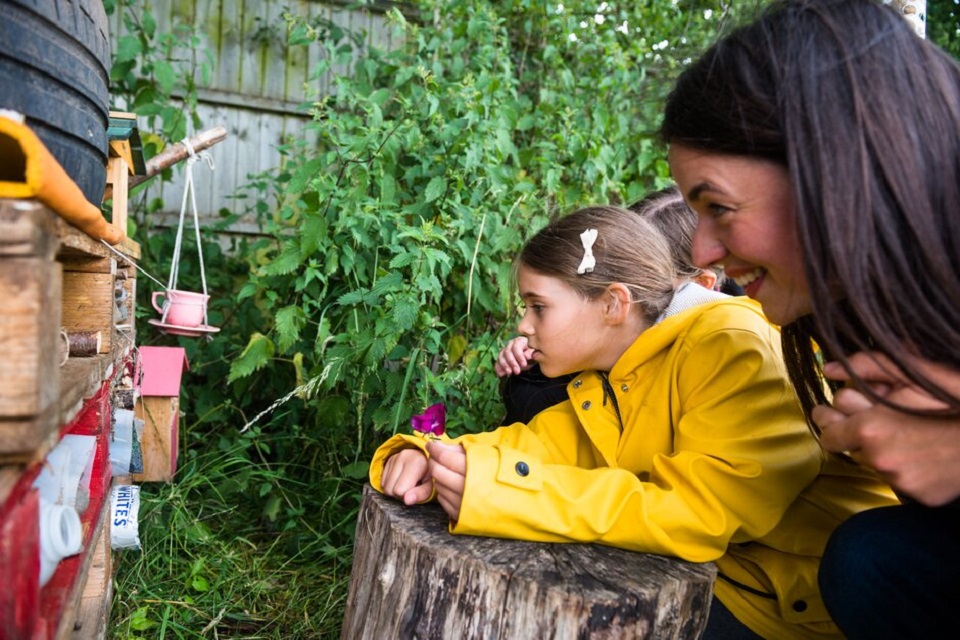
John’s top tips to take away
|
1. Start small – just take on one project at a time. Establish it, work out how to maintain it (projects can fail here as it’s the upkeep that can be tricky), then move onto creating new adventures.
|
|
2. Contact local businesses for free materials – we often use offcuts, waste material from manufacturing etc to recycle in our projects. Pallets, tyres, timber offcuts, lengths of plastic piping, bricks, etc. They are often very willing to help and it’s nice to build up links around the area.
|
|
3. Learn alongside the children – you don’t need to be an expert, and it serves as a great opportunity to model those learning skills we work so hard to embed.
|
|
4. Grow fewer crops but more of them – initially we grew small amounts of lots of veg but growing fewer crops but more of them works better for the school kitchen. We are currently growing cucumbers, sweetcorn, sweet peppers, early potatoes and tomatoes. |
|
5. Involve the children in fundraising – we run an elderflower cordial shop each year. The children make the cordial from our wild harvest from the school hedge. They sell it at playtime and bottle some to sell to the community. In the winter the children make magic wands and reindeers from hazel and sell them at the Christmas fair to raise money.
|
|
6. Establish links with the local community – The Rotary Club came and helped us plant our Crocus Meadow last November; The Master Composters Society gave the children a talk on composting – we have now created a compost heap, a worm farm and a leaf mould compost bin.
|
|
7. Get the children involved in a big project – it gives them a sense of satisfaction and a feeling of a job well done. Examples here are our no dig wildflower meadow, making fences using hazel and creating pathways around the school site.
|
|
8. Don’t underestimate the value of spending time observing your surroundings. Actively noticing is a great life skill. |
|
9. Don’t expect perfection, it can bog you down. Remember the saying ‘perfection is the enemy of progress’. We’ve had some disasters with our planting projects – like our sweet peas this year. We built six-foot frames expecting a wall of scent and colour but ended up with plants six inches high. Still lots of flowers but not what we thought, but always look at it as an opportunity to learn and to improve those resilience skills. Get stuck in and have a go! |
|
10. Have fun – if we could collect the smiles and laughter we produce, we would have a bumper harvest every day. |
